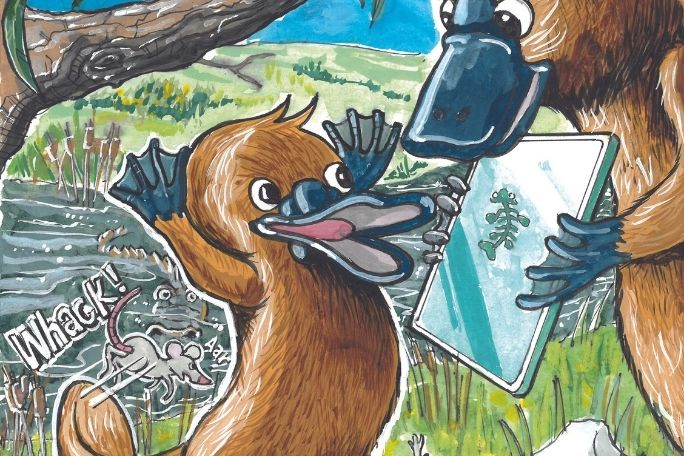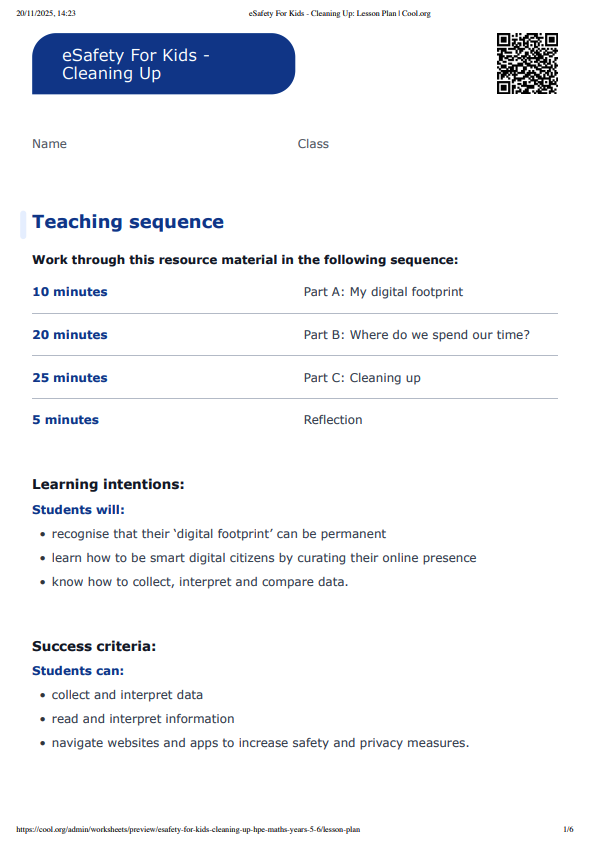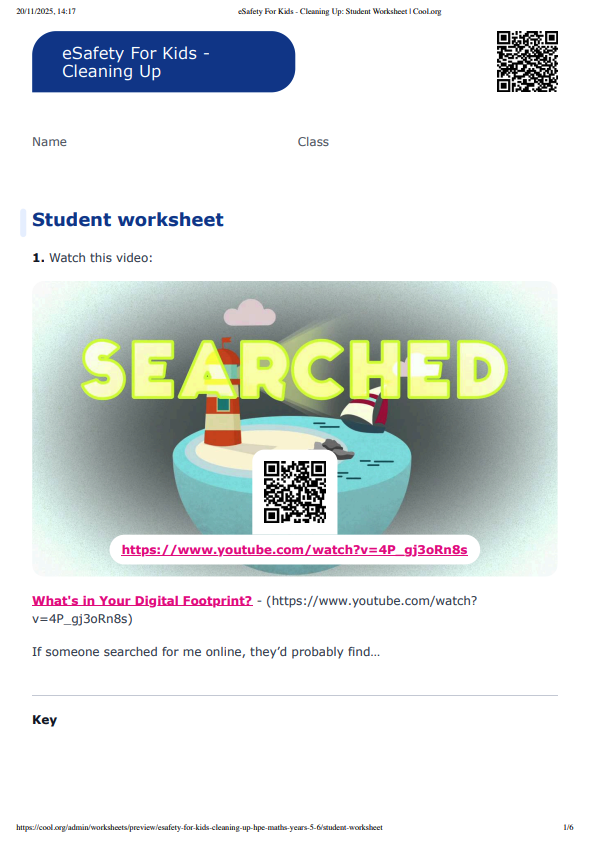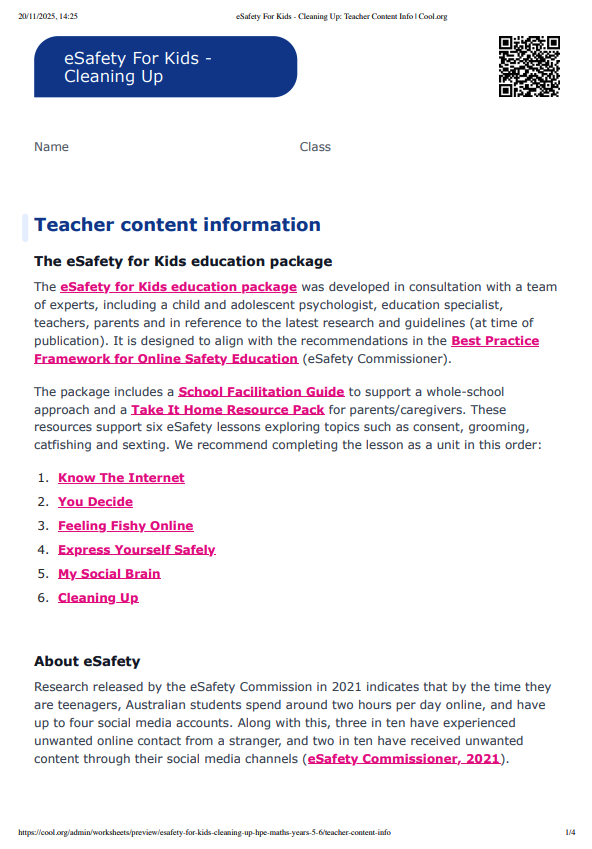Lesson summary
In this lesson, students will consider some consequences of having a publicly visible digital footprint. After considering their peers' most common online activities, they refer back to their prior learning about digital safety and avoiding tricky people online and learn how to audit and clean up their online presence to protect themselves and others.
Learning intentions:
Students will:
- recognise that their ‘digital footprint’ can be permanent
- learn how to be smart digital citizens by curating their online presence
- know how to collect, interpret and compare data.
Success criteria:
Students can:
- collect and interpret data
- read and interpret information
- navigate websites and apps to increase safety and privacy measures.
Lesson guides and printables
Curriculum links
Select your curriculum from the options below.
Lesson details
Skills
This lesson is designed to build students’ competencies in the following skills:
- communication
- critical thinking
- digital literacy
- initiative
- problem solving
- social skills
Curriculum Mapping
Australian Curriculum content descriptions:
Years 5 & 6 Health and Physical Education:
- Plan and practise strategies to promote health, safety and wellbeing (ACPPS054)
- Examine the influence of emotional responses on behaviour and relationships (ACPPS056)
Year 5 Mathematics:
- Pose questions and collect categorical or numerical data by observation or survey (ACMSP118)
- Describe and interpret different data sets in context (ACMSP120)
Year 6 Mathematics:
- Interpret and compare a range of data displays, including side-by-side column graphs for two categorical variables (ACMSP147)
Year 6 English:
- Participate in and contribute to discussions, clarifying and interrogating ideas, developing and supporting arguments, sharing and evaluating information, experiences and opinions (ACELY1709)
Syllabus outcomes: PHS3.12, SLS3.13, COS3.1, INS3.3, IRS3.11, MA3-18SP, MA3‑1WM, MA3‑3WM, EN3-1A
General capabilities: Literacy, Personal and Social Capability, Ethical Understanding, Information and Communication Technology (ICT) Capability
Relevant parts of Years 5 & 6 HPE achievement standards:
Students recognise the influence of emotions on behaviours and discuss factors that influence how people interact. They describe their own and others’ contributions to health, physical activity, safety and wellbeing.
Relevant parts of Year 5 Maths achievement standards:
Students pose questions to gather data, and construct data displays appropriate for the data
Relevant parts of Year 6 Maths achievement standards:
Students interpret and compare a variety of data displays including those displays for two categorical variables. They interpret secondary data displayed in the media.
Relevant parts of Year 6 English achievement standards:
Students contribute actively to class and group discussions, taking into account other perspectives
This lesson is part of the wider unit of work eSafety For Kids
Time required: 60 mins
Level of teacher scaffolding: High – prepare resources and support group work
Resources Required
- Device to play video to class
- Glossary of Key Terms (optional)
- Handling Sensitive Topics and Issues Factsheet (digital copy)
- Printed copies of The Carly Ryan Foundation App Factsheets, OR digital devices to access these – one per group of four students
- Student Worksheets – one copy per student
Connected resources:
Additional Info
Although this can be completed as a standalone lesson, it will be most effective if completed within the sequence of the unit, as follows:
The eSafety for Kids education package was developed in consultation with a team of experts, including a child and adolescent psychologist, education specialist, teachers, parents and in reference to the latest research and guidelines (at time of publication). It is designed to align with the recommendations in the Best Practice Framework for Online Safety Education (eSafety Commissioner).
The images for this eSafety for Kids package are sourced from The Tweeting Galah book series and used with permission from Kim Maslin.




Welcome back!
Don't have an account yet?
Log in with:
Create your free Cool.org account.
Many of our resources are free, with an option to upgrade to Cool+ for premium content.
Already have an account?
Sign up with:
By signing up you accept Cool.org's Terms and Conditions(Opens in new tab) and Privacy Policy(Opens in new tab).